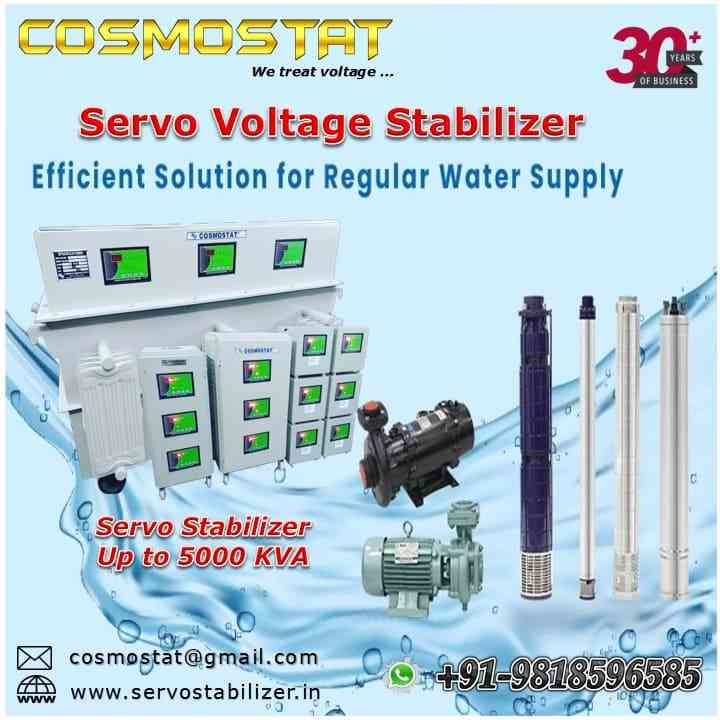
Servo Stabilizer for Submersible Pump: Ensuring Efficiency and Longevity
In this comprehensive article, we will delve into the world of servo stabilizers, focusing specifically on their crucial role in enhancing the performance and lifespan of submersible pumps. Submersible pumps play a pivotal role in various applications, from agriculture to industrial processes, and maintaining their efficiency is of utmost importance. Here, we will explore how servo stabilizers contribute to achieving this goal.
Introduction: Understanding Submersible Pumps
Before diving into the details of servo stabilizers, let's establish a clear understanding of submersible pumps. These specialized pumps are designed to operate underwater, making them ideal for applications such as groundwater extraction, irrigation, and wastewater management.
The Significance of Voltage Stability
Voltage stability is a critical factor that directly impacts the functionality of submersible pumps. Fluctuations in voltage can lead to various issues, including reduced pump efficiency, increased energy consumption, and even motor damage. This is where servo stabilizers come into play.
What is a Servo Stabilizer?
A servo stabilizer is an electrical device designed to maintain a stable voltage supply to connected equipment. It accomplishes this by continuously monitoring the input voltage and making real-time adjustments to ensure the output voltage remains within a specified range. Let's explore the key components and functions of a servo stabilizer:
Voltage Sensor
A voltage sensor is responsible for constantly monitoring the input voltage. It sends this information to the control circuit.
Control Circuit
The control circuit processes the voltage data and determines if any adjustments are needed. It then sends commands to the next crucial component.
Servo Motor
The servo motor is responsible for physically adjusting the output voltage. It moves a variable transformer's position to achieve the desired voltage level.
Output Voltage
The stabilized output voltage is supplied to the connected equipment, ensuring it operates within the optimal voltage range.
Benefits of Using Servo Stabilizers with Submersible Pumps
Now that we understand the basics of servo stabilizers, let's explore why they are essential for submersible pump applications:
Voltage Regulation
Servo stabilizers excel in maintaining a consistent voltage supply, preventing voltage fluctuations that can harm submersible pump motors.
Motor Protection
By stabilizing the voltage, servo stabilizers safeguard submersible pump motors from overheating and premature wear and tear.
Energy Efficiency
Stable voltage supply enhances the energy efficiency of submersible pumps, reducing operational costs.
Extended Lifespan
With reduced stress on the motor and other components, submersible pumps equipped with servo stabilizers tend to have a longer lifespan.
Choosing the Right Servo Stabilizer
Selecting the appropriate servo stabilizer for your submersible pump is crucial. Consider factors such as the pump's power rating, voltage range, and environmental conditions to make an informed decision.
Installation and Maintenance
Proper installation and regular maintenance are vital for maximizing the benefits of servo stabilizers. Ensure that the stabilizer is correctly installed and periodically serviced to keep it in optimal condition.
Conclusion
In conclusion, servo stabilizers play a vital role in ensuring the efficiency and longevity of submersible pumps. These devices provide voltage stability, motor protection, energy efficiency, and extended lifespan to your pump systems. By choosing the right servo stabilizer and maintaining it properly, you can significantly enhance the performance of your submersible pumps.

